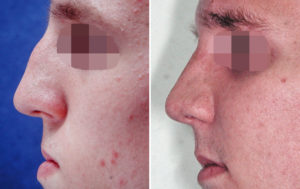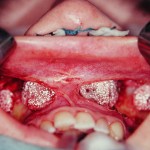Implants are very useful for producing three-dimensional facial changes. By extending the outer boundaries of bony prominences, the proportions and shape of the face can be changed dramatically. Implants essentially camouflage facial bony deficiencies or enhance a normal prominence. Traditional and well known facial implants are that of the chin, cheeks, or nose. Jaw angle implants are also becoming more commonplace today.
Most facial implant use is for one region only (e.g., chin) even if the area of enhancement has two sides. (e.g., cheeks) Multiple sites of enhancement at one procedure can also be done and are associated with more significant facial changes. The use of combination cheek and chin augmentation or even chin, cheek and jaw angle augmentation are traditional implant duets and trios.
Another good facial implant combination is in the use of camouflaging a midface deficiency. Some midface hypoplasias are obvious, other are more subtle. Either way, there is an apparent flatter or less convex facial profile. In its severest form, the facial profile will actually be concave. The degree of midface underdevelopment is most evident by looking at one’s teeth or bite relationship. There may be an underbite or an edge-to-edge bite at the incisors. Someone may have had prior orthodontics so the ‘true’ bite relationship may have become obscured.
Midface deficiency is marked by flatter cheekbones and a ‘sunken’ base to the nose, known as the paranasal region. The entire midfacial skeleton is recessed from below the eyes down to the upper teeth. This bony position will have an impact on other facial areas making the nose and chin look bigger and the upper lip look smaller and thinner.
In young patients or more severe midfacial deficiencies, one should consider moving part or all of the midfacial bones. Traditional LeFort osteotomy patterns in conjunction with orthodontics is the standard approach. For patient’s with less significant deficiencies or who are not desirous of making that degree of surgical effort, augmenting the deficient bone is another option.

With an improved midfacial profile, the nose will appear smaller and may not require any alteration. For others, changing the shape of the nose through a rhinoplasty may be simultaneously beneficial. This can be determined before surgery through computer prediction imaging.
Dr. Barry Eppley
Indianapolis, Indiana



